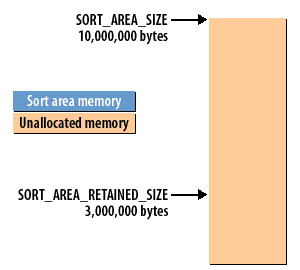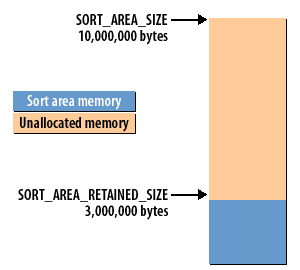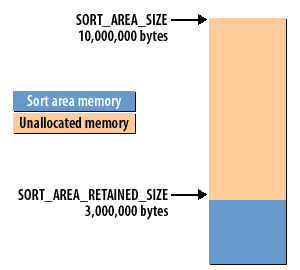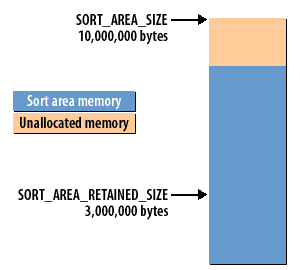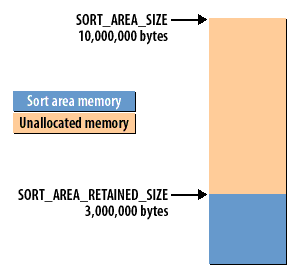Distribute System Overhead evenly over Available Drives
System overhead consists of I/O to the SYSTEM tablespace for the data dictionary, the TEMP tablespace for sorting, and the tablespaces that contain rollback segments for undo information.
You should consider the system profile in spreading the system overhead over multiple drives.
For example, if the application generates a lot of data changes versus data reads, the I/O to the rollback segments may increase due to higher writes for changes and higher reads for consistent read functionality.
Sort activity can also affect disk I/O. Prior to Oracle Database 10g, youwou ld get the majority of sorts to occur in memory through tuning the SORT_AREA_SIZE parameter in the initialization file. Oracle constantly queries and updates the data dictionary stored in the SYSTEM tablespace, and this information is cached in the shared pool section of the SGA, so sizing your shared pool properly is a key to overall performance. As of Oracle Database 10g, Oracle can automatically and dynamically size the different pools in the SGA.
Sort activity can also affect disk I/O. Prior to Oracle Database 10g, youwou ld get the majority of sorts to occur in memory through tuning the SORT_AREA_SIZE parameter in the initialization file. Oracle constantly queries and updates the data dictionary stored in the SYSTEM tablespace, and this information is cached in the shared pool section of the SGA, so sizing your shared pool properly is a key to overall performance. As of Oracle Database 10g, Oracle can automatically and dynamically size the different pools in the SGA.
Oracle Sort Area
